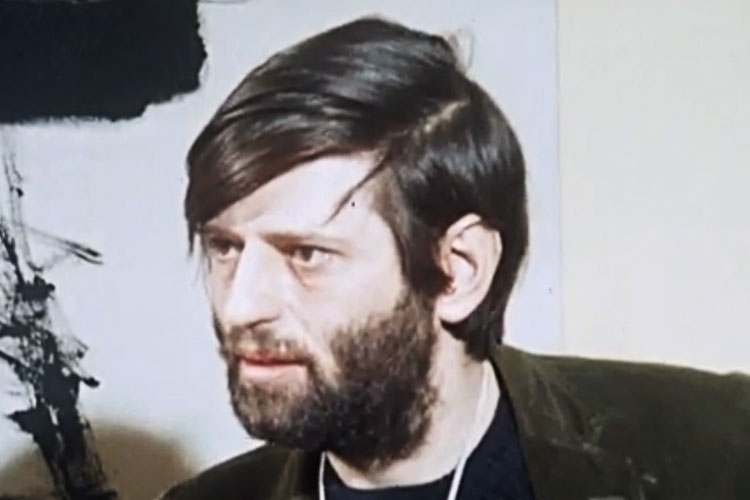Scholars dissatisfied with their university administrations might ponder the case of sacked American Marxist academic Allen Krebs, who went on to co-found not one but two “free universities”, on opposite sides of the Atlantic.
In 1965, after a falling-out over Cuba and Marxism with Adelphi University, where he was assistant professor of sociology, Krebs co-founded the Free University of New York (FUNY), one of the most successful of the first wave of free universities that swept across North America and Western Europe in the 1960s. Then, in 1968, he co-founded another free university – the Anti-University of London.
After that he disappeared – no one apparently knows where. But what were his ideas? And why should they interest today’s students and academics?
Krebs was not a prolific writer, but he did produce a handful of very powerful articles. Hashish, Avant Garde and Rearguard first appeared in 1965 in Streets, one of the numerous “little magazines” that thrived in counterculture metropolises such as New York City and San Francisco. Written in Beirut, where Krebs was briefly associated with the American University, it offered a Marxist analysis of the Beat Generation, 12 of whose acolytes – a little group of “new millenarians” – had been drawn to the city by its low cost of living and the easy availability of hashish.
“The American beats…are stretched out on the same rack with the rest of the [American] middle class,” Krebs writes. “While Arab radicals feverishly plot and conspire, their Western confrères sit not five kilometers away, grouped around an elaborate narghile – their eyes glazed, their faces expressive of some fleeting, privatized epiphany; the one band seeking a collective solution to the ills with which their purulent society is riddled, the other seeking a larger collective in which a drugged escape from the difficulties of their epoch might be declared valid.”
Two years later, Krebs published The University. This appeared in the summer 1967 issue of Treason!, the title being an ironic swing at the obsessive “commie-bashing” of the period, which considered any sort of left-wing criticism of the powers that be as unpatriotic, if not actually sponsored by Moscow. Treason! was the Free University of New York’s quarterly magazine, although by this stage FUNY, which Krebs had co-founded with his wife Sharon, a graduate student at Columbia University, and Jim Mellen, a politics lecturer at Drew University, had become the Free School of New York, after the city authorities had threatened to prosecute it if it continued to use the word “university” without showing proof of the required $500,000 in assets.
“The business of the university is to serve business,” Krebs writes. “It is controlled by businessmen and the profit from its operations accrue [sic] to businessmen; [although] it is financed by the entire society.”
American universities, he continues, “yield a profit for those that control them” three times over. First, “in the training of future corporation employees for free or for next to nothing”. Second, as a source of tax breaks. And third, from the intermingling of businessmen with university administrators. “And [then] while these men and their confrères across the country develop profit directly from the university till, they make contact…with other businessmen and military, governmental, and scientific notables whose careers intersect at college boardrooms.”
It is the administrators, Krebs says, who carry out the American universities’ “personal recommendation systems”, who tally up the academics’ publications (“publish or perish” being no 21st-century phenomenon), who issue “probationary contracts” to wannabe academics, who handle the “amusing question of tenure” and who manage the universities’ “raw material”, which is to say its students, for which purpose the “owner-clients” had set up the universities in the first place.
The students are controlled through a “phantasmagoria” of irrational ordinances and the grading system. “As all of human endeavour from murder to art can be measured against abstract units of value (eg, dollars), so all of human learning” is “similarly collapsed into an educational unit called a ‘credit’”, he writes.
According to FUNY’s first course catalogue, Krebs and company forged their university in direct response to this “intellectual bankruptcy and spiritual emptiness”. It was to be passionate, confrontational, encouraging of the “clash of ideas”, leery of objective scholarship and, last but by no means least, run by its “intellectual participants” (not the administrators and not the businessmen then. Olé!). And, of course, there would be no examinations.
So how did it measure up?
The teaching was certainly committed – most of the first term’s faculty were avant-gardists or left-wing politicos, some rather eminent. More than 200 students registered, many paying a pittance, while the teachers worked for nothing or next to nothing.
As for the administration, that was formally in the hands of a coordinating committee of 10: five students and five faculty. But, in effect, all the really important decisions were taken by Krebs (a member of the Marxist-Leninist Progressive Labor Party), who could out-talk anyone.
On one occasion, the faculty was almost torn apart on the issue of freedom of speech: to allow or not to allow Cold War military strategist Herman Kahn to teach – for remarkably, if only to test a point, he wanted to. Ultimately, Kahn did teach – or rather, he debated with Krebs. But Krebs did not find the experience a happy one. As he wrote to his friend, fellow lecturer and so-called anti-psychiatrist Joe Berke: “Kahn disgusts me. He impresses me as a vile, corpulent Dr Strangelove and while I can laugh at Strangelove on a movie screen, when he sits and farts A‑bombs three feet away from me in FUNY I begin to feel ill. […] Who needs more Krupps and Goebbels and Eichmanns paraded before one’s eyes? Why serenade the architechts [sic] of mass murder?”

During the summer of 1967, Krebs moved to London to take part in the international Congress on the Dialectics of Liberation (for the Demystification of Violence), an extraordinary two-week-long event organised by Berke and other members of the UK’s anti-psychiatry movement, who believed that psychiatric treatments often did more harm than good. Like FUNY, it too brought together the artistic avant-garde with members of the revolutionary Left, including the University of California, San Diego philosopher and sociologist Herbert Marcuse and the anarchist writer and social philosopher Paul Goodman.
FUNY, meanwhile, staggered on until about 1970 or 1971, arguably becoming little more than a front for the Progressive Labor Party. One of its more exciting events occurred early in 1967 when it hosted the premiere of Up your Ass, a play by Valerie Solanas, founder of SCUM (the Society for Cutting up Men), author of the notorious SCUM Manifesto and the future would-be assassin of Andy Warhol.
Krebs hoped that the Anti-University, which he co-founded with Berke and his fellow anti-psychiatrist David Cooper, would learn from FUNY’s experiences. There would, for starters, be less emphasis on left-wing politics and more on radical art and culture. And, again, he and his new co-founders assembled an impressive faculty.
The anthropologist Francis Huxley would teach “dragons”, the composer Cornelius Cardew “experimental music”, the feminist psychoanalyst Juliet Mitchell “the position of women”, the activist and writer Obi Egbuna “black power”, the writer David Caute “literature and commitment”, and a host of others a variety of similarly “alternative” subjects. All who needed money would be paid – as indeed they were initially.
The A-U opened at 49 Rivington Street, Shoreditch, with quite a ding-dong on 12 February 1968. No one was “on message”. Poets fought with painters, novelists argued with psychoanalysts and publishers sparred with sociologists. Indeed, the faculty bickered over almost everything. One participant suggested that they form an ashram.
Nonetheless, in spite of the confusion, more than 150 students enrolled – many at 10 shillings per course, plus a membership fee of £8. “Anticheques were not accepted,” noted the journalist and novelist Mervyn Jones in an “anti-in general” column in that week’s New Statesman.
At teatime, the BBC broadcast an interview with Krebs. The A-U, he said, “is a qualitatively different thing to an establishment university. It is an attempt to bring together under one roof all kinds of things that are not permitted at established universities, or if they’re permitted at established universities aren’t accessible to 95 per cent of the population [who don’t attend university].”
He then added some further thoughts: “The whole question of what you get in general from education is a kind of moot point…So far as I’m concerned, education is trying to dig and understand the kind of things that are going on in the world about you, and a way of expressing yourself and communicating to others that you might not have thought about before.”
Later, no less a figure than Frank Kermode, Winterstoke professor of English at the University of Bristol, wrote an account of the A‑U for the BBC’s Listener magazine: “What if it should succeed?” he asked. “As an orthodoxy it can only exist as an institution. The new-New, the new anti-university, will supplant it.”
This, in fact, happened, although not in the sense that Kermode meant. Six months later, the A-U collapsed, largely because its premises had been taken over by a group of young people with no prior commitment to education. “Soon the building had the aura of a Bowery flophouse”, recalled Berke’s then wife, the poet Roberta Elzey, referring to the ultra-cheap lodgings in New York City.
Despite its dissolution, the A-U continued to meet in members’ houses at least until the early 1970s. Meanwhile, Krebs’ A‑U compañeros, Cooper and Berke, took part in further developments within the anti-psychiatry movement, while his FUNY co-founders went on to associate themselves with the Weathermen, a left-wing revolutionary movement aimed at organising the overthrow of the US government (Sharon, his wife, served a jail sentence for attempting to blow up a bank). But before the end of the 1960s, Krebs himself seems to have vanished.
All I know is that he died in Contra Costa County, California, on 10 December 1991, aged 57, of lung cancer. Probably he found it difficult to find a regular teaching job after his experiences with FUNY and the A-U – particularly given his fraught run-in in 1966 with the House of Representatives Un-American Activities Committee.
But surely he must have been teaching something, somewhere, to somebody during his 20 years or so of obscurity. I refuse to believe that such a firebrand simply retired.
Martin Levy is special collections assistant at the University of Bradford. He is writing a book about anti-psychiatry and violence.
POSTSCRIPT:
Print headline: Free and easy?
Register to continue
Why register?
- Registration is free and only takes a moment
- Once registered, you can read 3 articles a month
- Sign up for our newsletter
Subscribe
Or subscribe for unlimited access to:
- Unlimited access to news, views, insights & reviews
- Digital editions
- Digital access to THE’s university and college rankings analysis
Already registered or a current subscriber?




